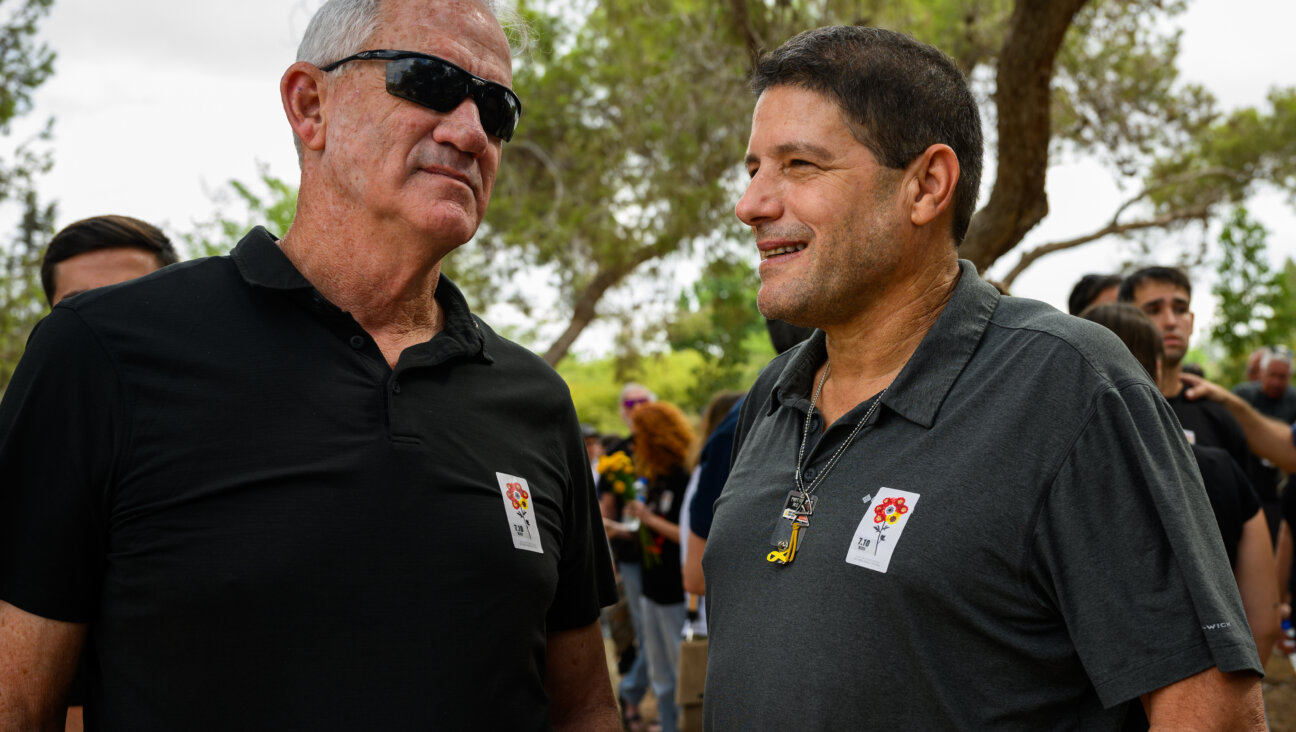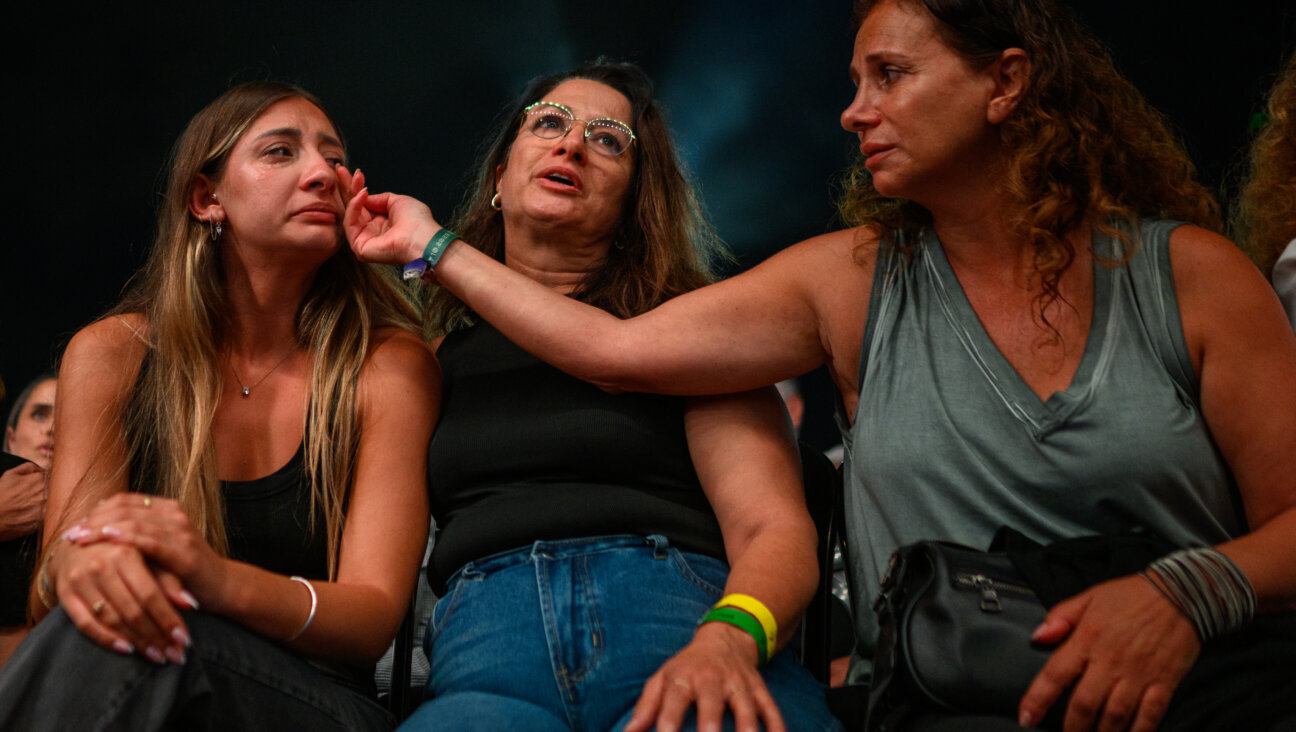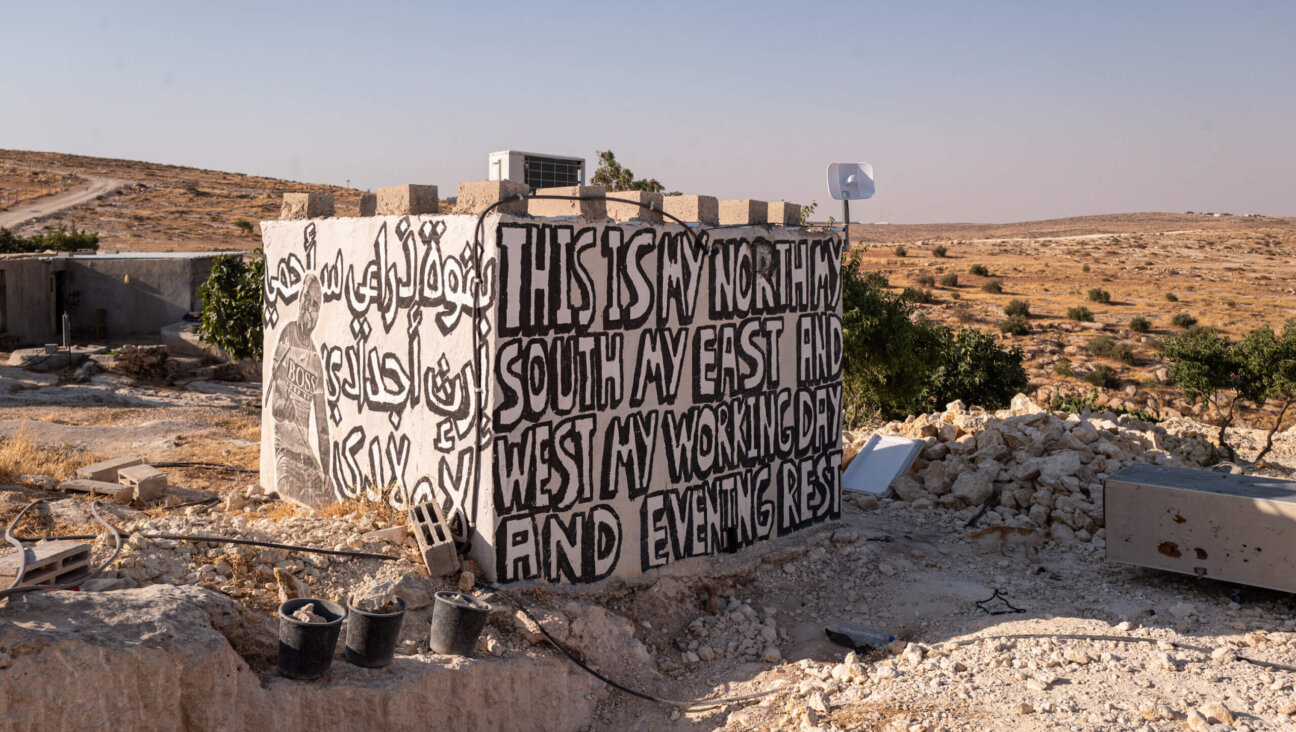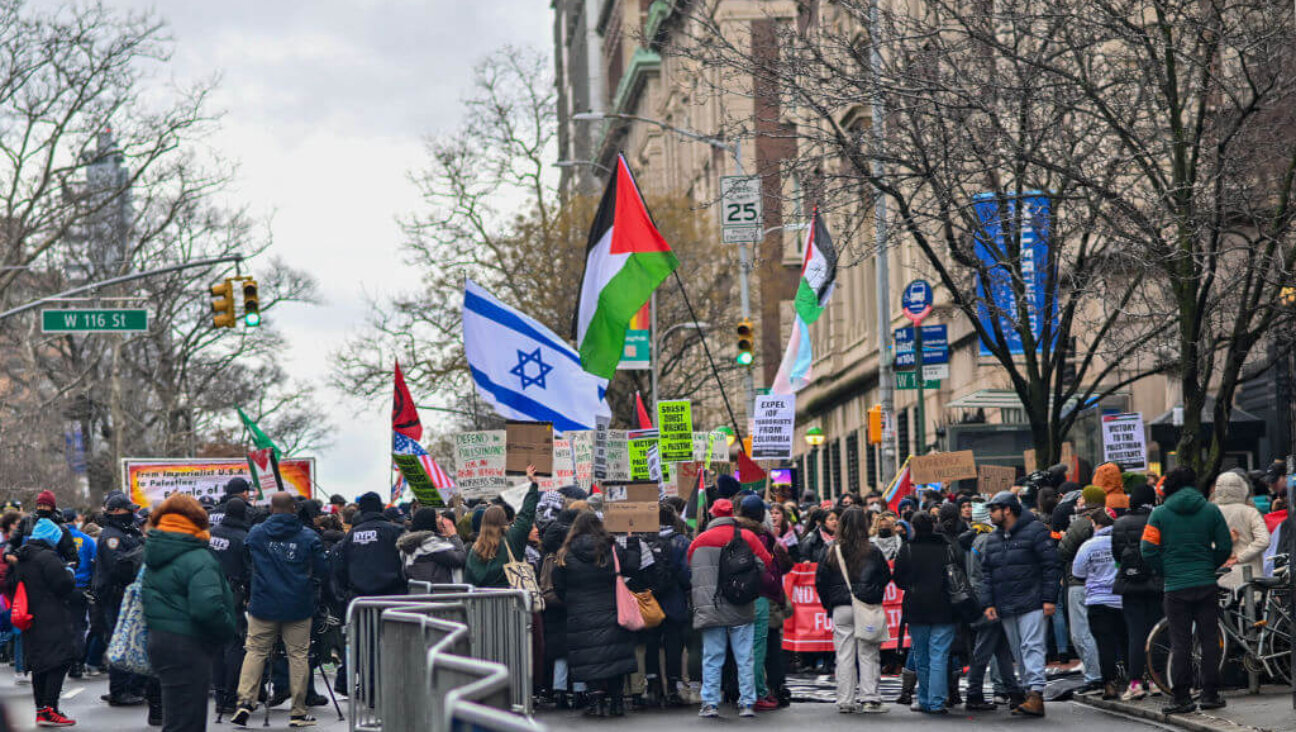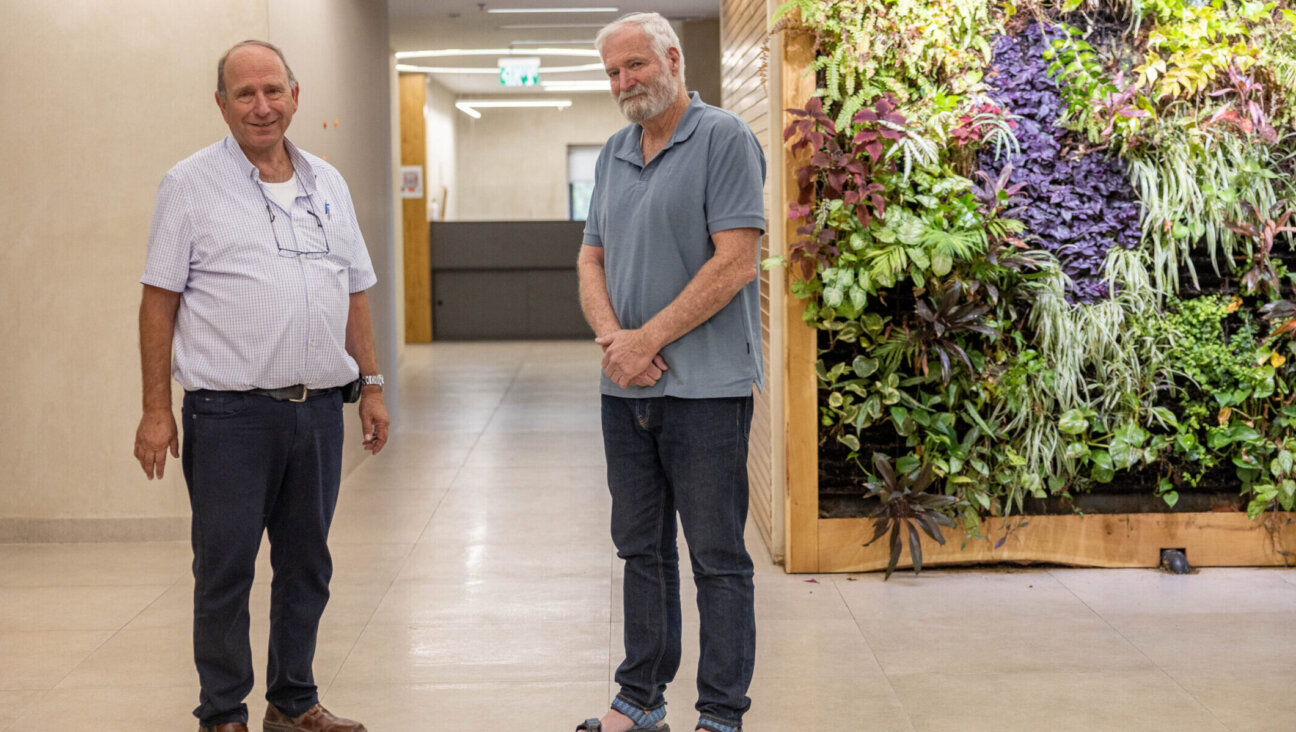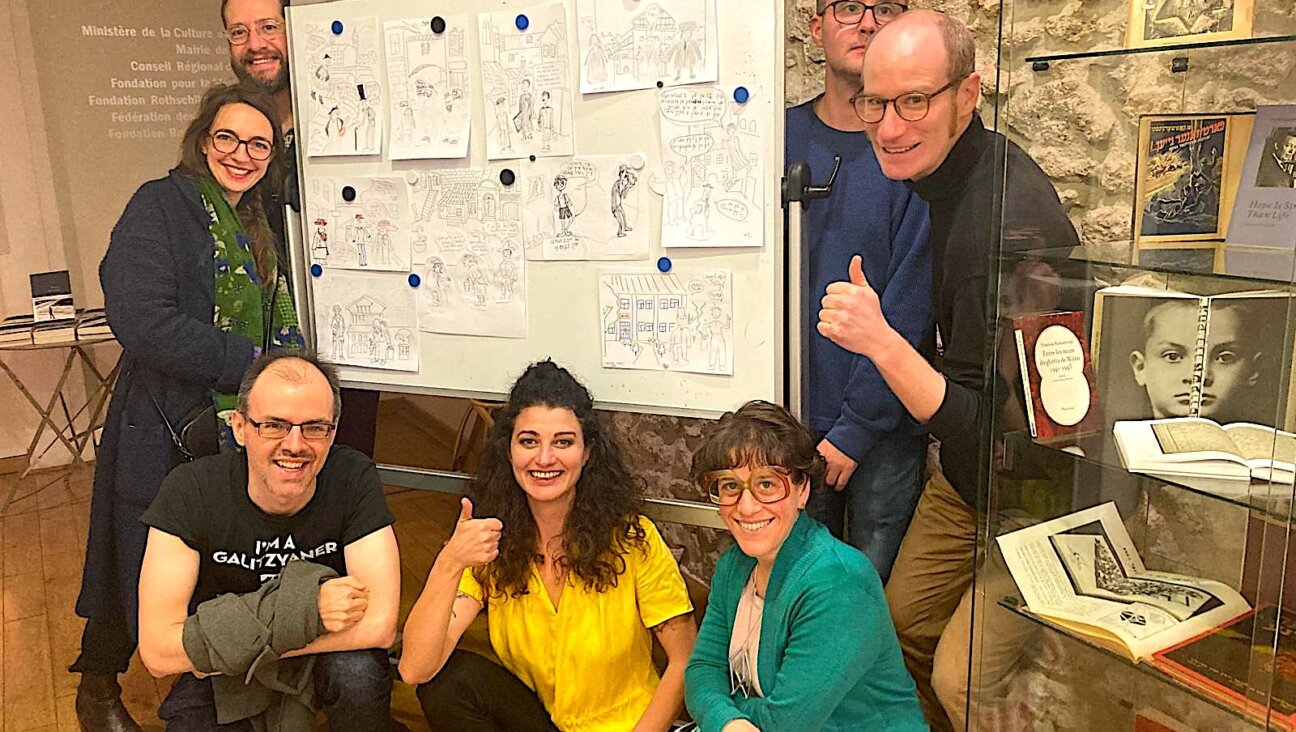August 26, 2005
Fixated on Ghosts, Overlooking the Living
Jo-Ann Mort’s August 12 “Letter From Berlin” is a perfect example of how some view the glass as half empty while others see it as half full (“Waves of Emptiness Mark History in German Capital”). I, too, was in Berlin recently. As the daughter of a Viennese man who had to flee his home overnight and hand over his factory to the Nazis, I had hesitated to travel in Germany until quite recently.
But when a trip came along that allowed me to study, of all things, Prussian decorative arts, I jumped at the chance. By day I toured 18th- and 19th-century Hohenzollern palaces, and by night I explored Jewish Berlin.
Where Mort found ghosts, corpses and empty fields, I found an engaged and engaging Jewish community. Not far from the Oranienburger Synagogue, the Berlin Jewish Film Festival was under way, packing houses nightly. On the night I was there, “Watermarks,” a film about the Hakoah Vienna swim team, was shown, followed by a guest appearance by one of the subjects and a question-and-answer period that had to be cut off because there were crowds waiting to get into the next movie. Another evening, across town in Kreuzberg, I ate at a kosher restaurant, surrounded by young Jews doing what young Jews do: arguing politics and checking out who was at the next table.
Despite favorable press coverage, the new Holocaust memorial is indeed a lifeless and unimaginative block of stones. The nearby Jewish Museum of Berlin, on the other hand, is an astonishingly compelling architectural marriage of theme and design, which illustrates the Holocaust like no memorial in any other country. More importantly, it is bustling with activity around the clock. On the evening I visited, there happened to be a large and spirited reception celebrating the anniversary of the invention of the kiosk by a Berlin Jew.
Travel is a subjective experience. My time in Berlin was inspirational. Rather than seeing the void, I viewed and — to the extent that any traveler can — participated in the contemporary life force that fills Jewish Berlin.
Roberta Elliott Wantman
South Orange, N.J.
1-2-3… 4 Jews Were Out at an Old Ballgame
In the spirit of collaborative research appropriate to a question of such cosmic significance, we are pleased to report that we have jointly determined that four Jewish major leaguers appeared in the same game for the New York Giants (“1-2-3 Jews at the Ballgame,” August 12).
It happened in the first game of a double-header on September 21, 1941, just hours before Rosh Hashanah. Harry Feldman, making his second major league start, shut out the Boston Braves in a nine-hit, complete game performance. Harry “the Horse” Danning was his catcher. Sid Gordon, who had made his major-league debut on September 11, a day after Feldman’s first game, played center field and had one hit in three at-bats. And Morrie Arnovich played left field and went 1-4.
Elli Wohlgelernter
Sports Editor
Encyclopedia Judaica (forthcoming edition)
Jerusalem, Israel
Martin Abramowitz
President
Jewish Major Leaguers, Inc.
Newton, Mass.
Backing Gun Rights From the Grass Roots
I am a Conservative Jew from Long Island, a gun owner and, like the majority of my family, a proud life member of the National Rifle Association (“Powerful Gun Lobby Takes Aim With First Jewish Leader,” August 19). I was not raised in a household with guns, but we never put down guns, either.
The organizations listed by the Forward as holding positions opposite to that of the NRA — the American Jewish Committee, the American Jewish Congress, the Anti-Defamation League, B’nai B’rith, the Central Conference of American Rabbis, Hadassah, Jewish Labor Committee, the National Council of Jewish Women and the Union for Reform Judaism — are the most liberal, anti self-defense groups that I ever have known. It is also telling that the list of national anti-gun figures includes three leaders of the Reform movement: Rabbi Eric Yoffie, president of the Union for Reform Judaism; Rabbi Paul Menitoff, executive vice president emeritus of the Central Conference of American Rabbis, and Rabbi David Saperstein, director of the Religious Action Center of Reform Judaism. I couldn’t help but notice that none of those listed is a Conservative or Orthodox Jew.
While many of the Jews I know belong to a Reform organization, more than 60% of them own guns. Maybe these organizations should poll their membership.
I think it is wonderful that Sandy Froman assumed the NRA’s top position, and I look forward to aiding her in the NRA’s endeavors to promote safety, the Second Amendment, the shooting sports and hunting.
Remember, the Second Amendment is part of a larger document known as the Bill of Rights — and you cannot pick and choose from that document. It is the whole thing or nothing, and nothing would not be a livable situation. Most importantly, the Bill of Rights does not grant us, the people, any rights. It only enumerates our God-given rights as citizens of this country.
Alan Chwick
Freeport, N.Y.
My mother survived Hitler’s death camps — and if she were alive today, I am sure she would agree without reservation with the National Rifle Association’s new Jewish president, Sandy Froman.
Ralph Rubinek
Staten Island, N.Y.
Remembering When Sholem Asch Was Red
Alyssa Quint’s August 19 review of the new anthology edited by Nanette Stahl, “Sholem Asch Reconsidered” (“Asch’s Diamonds”), notes that in 1939, “Asch’s world crumbled when he published ‘The Nazarene,’” which most Yiddish critics and readers “considered a piece of thinly veiled proselytizing literature.” Today it might remind us of “Jews for Jesus” pamphlets.
But this was not the only reason that the naive Asch got into trouble. He also became a propagandist for Stalinist Russia and was involved in various pro-Soviet front groups. American Communists lauded him for his efforts.
For example, at a Madison Square Garden reception for Soviet writers Ilya Ehrenburg and Konstantin Simonov, hosted by the National Council of American-Soviet Friendship on May 29, 1946, Asch spoke of the “feeling of compassion and love” Jews and Russians had for each other, as “brothers in sorrow…. You have rescued and safeguarded more of my people than all the rest of the world,” he remarked, and Jews would never forget “the kindness, the humanity and the brotherhood which the Soviet nation has shown to them in the darkest hour of their history.” In July 1946, the speech was printed in the organization’s periodical, Soviet Russia Today, under the headline “God Bless You, People of Russia.”
Henry Srebrnik
Department of Political Studies
University of Prince Edward Island
Charlottetown, Prince Edward Island, Canada
Finding Community Outside of Shul, Too
An August 12 article on the phenomenon of “rent-a-rabbi” facilitating Jewish life cycle rituals was provocative (“No Rabbi To Call Your Own? How About a Rental?”). I am a board member of The Ritualist, a San Francisco Bay Area nonprofit dedicated to helping Jews — both those who are synagogue members and those who are not — create meaningful Jewish life cycle rituals outside a synagogue framework.
Rabbis and synagogues are central to the vitality of Jewish life. Yet it is also true that rabbinic law permits any sufficiently educated Jew to perform most ritual functions. To depict this movement as “rent-a-rabbi,” however, is misleading. The ritualist works with rabbis, cantors, Jewish educators and educated laypeople who would agree with Rabbi Shirley Idelson’s remark that “you can’t do Judaism in a two-hour ceremony without any context.” These facilitators are committed to developing deep connections with the people they serve before, during and after the ritual event. The ritualist also provides them with professional development opportunities that address many of these issues.
I also share the concerns expressed in the article about Judaism practiced “outside its essential communal context.” While many clients do not consider themselves part of the Jewish community as defined by the rabbis in the article, they think of themselves as connected to other Jewish communities — just not synagogue-based ones.
Toby Rubin
Board Member
The Ritualist
Mill Valley, Calif.
A message from our CEO & publisher Rachel Fishman Feddersen

I hope you appreciated this article. Before you go, I’d like to ask you to please support the Forward’s award-winning, nonprofit journalism during this critical time.
We’ve set a goal to raise $260,000 by December 31. That’s an ambitious goal, but one that will give us the resources we need to invest in the high quality news, opinion, analysis and cultural coverage that isn’t available anywhere else.
If you feel inspired to make an impact, now is the time to give something back. Join us as a member at your most generous level.
— Rachel Fishman Feddersen, Publisher and CEO







